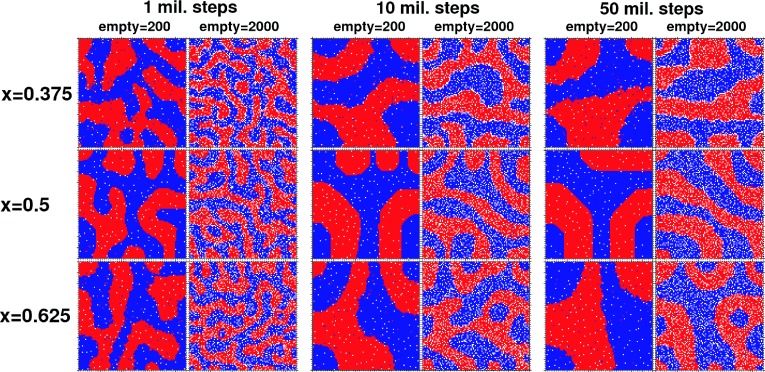Fig. 4.
The Schelling model as a liquid on a nonperiodic grid. The Schelling model on a 100 × 100 grid, with the same number of red and blue agents. Agents move even if their utility remains the same, which makes the model analogous to simulating a liquid. Utility is given by Eq. 2 with the values of x indicated here. Domain boundaries are nonperiodic. We show the evolution of this model for 200 and 2,000 empty cells. An increase in the volume of empty space results in more irregular cluster shapes and slower evolution because empty space behaves like a boundary layer (Fig. 2). In cases with x ≠ 0.5 clusters cannot form a smooth surface, whereas x = 0.5 leads to flat surfaces as predicted in Fig. 2. Supporting information (SI) Movies 1 and 2 show the evolution of clusters with x = 0.5.

